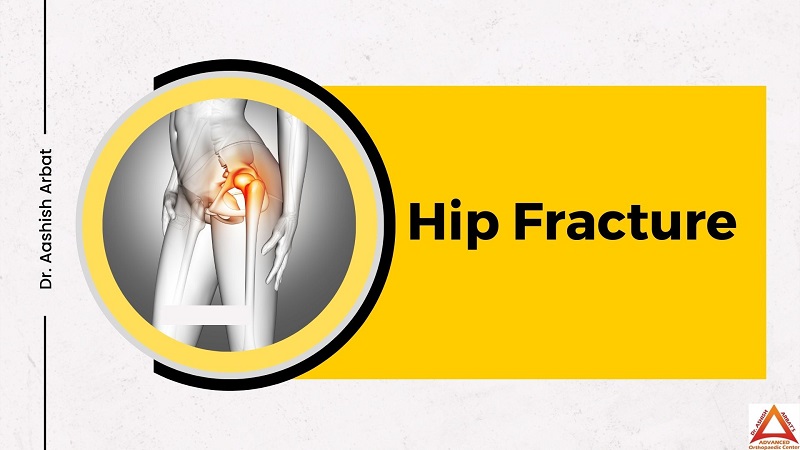
A hip fracture undeniably is a serious injury. To put in simple words, this may with complications can get dangerous. The hazard of hip fracture increases with age. A hip fracture practically always necessitates surgical repair or replacement, followed by physical therapy. Taking initiatives to uphold bone density and avoid falls can help prevent a hip crack.
In this write-up, Dr. Aashish Arbat a hip replacement surgeon in Pune explains hip fracture in detail.
Contents
Hip Fracture
Bones tend to weaken with age. Hip fracture refers to a break in the upper part of the femur (thigh bone), particularly near the hip joint. This is actually a break in the top quarter of the thigh bone, which is also termed the femur.
A hip fracture is a matter of concern. To learn why, read on.
Why is a Hip Fracture so Dangerous?
Hip fractures are very common in older people and can lessen a person’s capability to live independently. It may at times shorten their life as well. If you are aged and have a hip breakage, reduced agility can cause bed sores, blood clots in the legs or lungs, and the loss of muscle mass. Dr. Arbat describes how a hip fracture upsurges the danger of mortality and the various factors that place an older adult at risk of death following a broken hip.
The preliminary disturbance of the accident can be tough on a patient’s health. During repossession, a hip stress fracture can immobilize a patient for a long amount of time, causing blood clots and reduced muscle mass. Post-surgical problems, like contaminations and pulmonary embolism, may also contribute to high death rates.
A crack is a part or complete break in a bone. There can be either a single break or several breaks in a bone. A hip fracture is determined by the specific area of the break and the type of break in the bone.
Hip Fracture Types
- Femoral Neck Fracture
- Intertrochanteric Fracture
- Subtrochanteric Fracture
- Stress Fracture
Dr. Arbat the most esteemed hip replacement doctor in Pune mentions that each type of fracture necessitates different treatment approaches. This often involves surgery, physical therapy, and medication to control pain and help healing.
Hip fracture treatment generally includes quick hip fracture surgery, rehabilitation, and medication to manage pain and to stop blood clots and contamination.
Hip Fracture Treatment
Surgical Options
- Internal Fixation
- Partial Hip Replacement
- Total Hip Replacement
Medication
- Pain Management
- Blood Thinners
Rehabilitation
- Physical Therapy
- Occupational Therapy
Self-Care and Prevention
- Diet
- Lifestyle Changes
You must be wondering to know how to predict hip fracture. Well, as you fall it is obvious that you get certain indications of hip crack.
Hip Fracture Symptoms
Mentioned below are a few warnings to realize the possibility of a hip breakage;
- Difficulty in moving instantly after falling
- Puffiness and bruising in the hip
- Extreme pain in the hip
- Trouble in walking
- Arduousness in the hip area
- Distortion in the leg on the affected side
- Shorter leg on the affected hip side
It is important to understand how a hip fracture is diagnosed. A hip fracture x-ray can clearly show the location and severity of the breakage. Generally surgery treatments may differ depending on the harshness of your condition. An Orthopedic Doctor may suggest non-invasive treatments.
Hip Fracture Treatment Without Surgery
Non-Surgical Treatment as mentioned by Dr. Arbat a reputed Orthopedic Doctor in Pune includes Assistive Devices. Physical Therapy (PT), Electronic and Ultrasonic Bone Stimulation, Traction. Treating a hairline hip fracture generally involves a combination of rest, pain management, and gradual rehabilitation. In case of the worst type of hip fracture, surgery is possibly the only option. The worst type of hip fracture is usually measured to be an open (or compound) fracture.
Hip Fracture Recovery
Hip fracture recovery involves the following steps:
- Hospital Stay: Generally, patients stay up to 1 to 2 weeks in the hospital after a hip fracture.
- Learning to Walk Again: It may take around three months to learn to walk again.
- Regaining Mobility: Most people regain most of their agility after recovery.
Avoiding hip joint fractures includes a combination of lifestyle changes, home safety measures, and medical interventions.
Ways to Prevent Hip Joint Fracture
Implementing the following can significantly reduce the risk of hip fractures:
- Get enough calcium and vitamin D
- Exercise to strengthen bones and improve balance
- Avoid smoking or excessive drinking
- Assess the home for hazards
- Check your eyes
Hip Fracture Operation
A hip fracture operation generally involves surgery to repair or substitute the fractured hip. Let’s mention the key types of surgical treatments:
- Internal Repair Using Screws
- Total Hip Replacement
- Partial Hip Replacement

